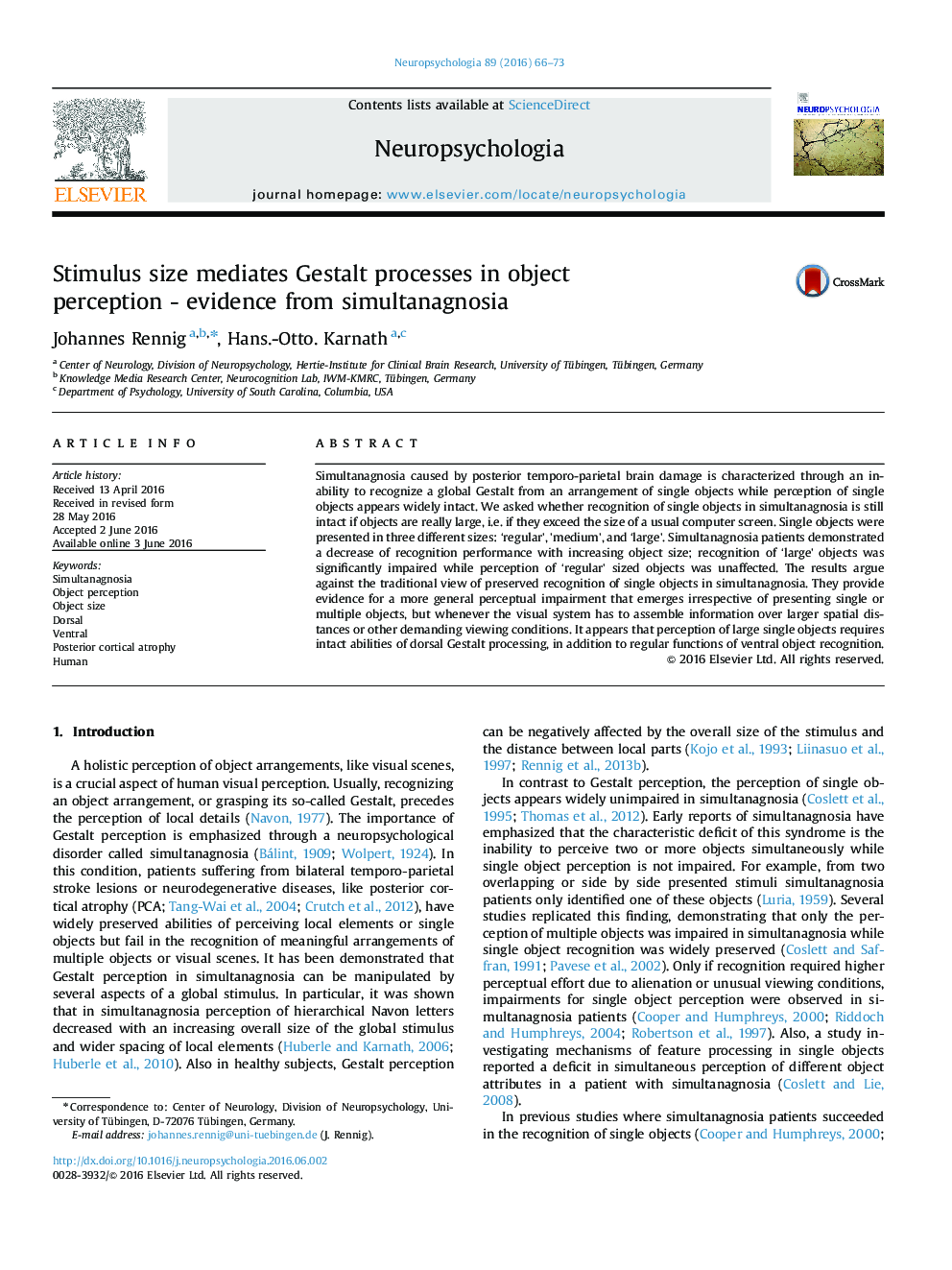| Article ID | Journal | Published Year | Pages | File Type |
|---|---|---|---|---|
| 7318632 | Neuropsychologia | 2016 | 8 Pages |
Abstract
Simultanagnosia caused by posterior temporo-parietal brain damage is characterized through an inability to recognize a global Gestalt from an arrangement of single objects while perception of single objects appears widely intact. We asked whether recognition of single objects in simultanagnosia is still intact if objects are really large, i.e. if they exceed the size of a usual computer screen. Single objects were presented in three different sizes: 'regular', 'medium', and 'large'. Simultanagnosia patients demonstrated a decrease of recognition performance with increasing object size; recognition of 'large' objects was significantly impaired while perception of 'regular' sized objects was unaffected. The results argue against the traditional view of preserved recognition of single objects in simultanagnosia. They provide evidence for a more general perceptual impairment that emerges irrespective of presenting single or multiple objects, but whenever the visual system has to assemble information over larger spatial distances or other demanding viewing conditions. It appears that perception of large single objects requires intact abilities of dorsal Gestalt processing, in addition to regular functions of ventral object recognition.
Related Topics
Life Sciences
Neuroscience
Behavioral Neuroscience
Authors
Johannes Rennig, Hans.-Otto. Karnath,
